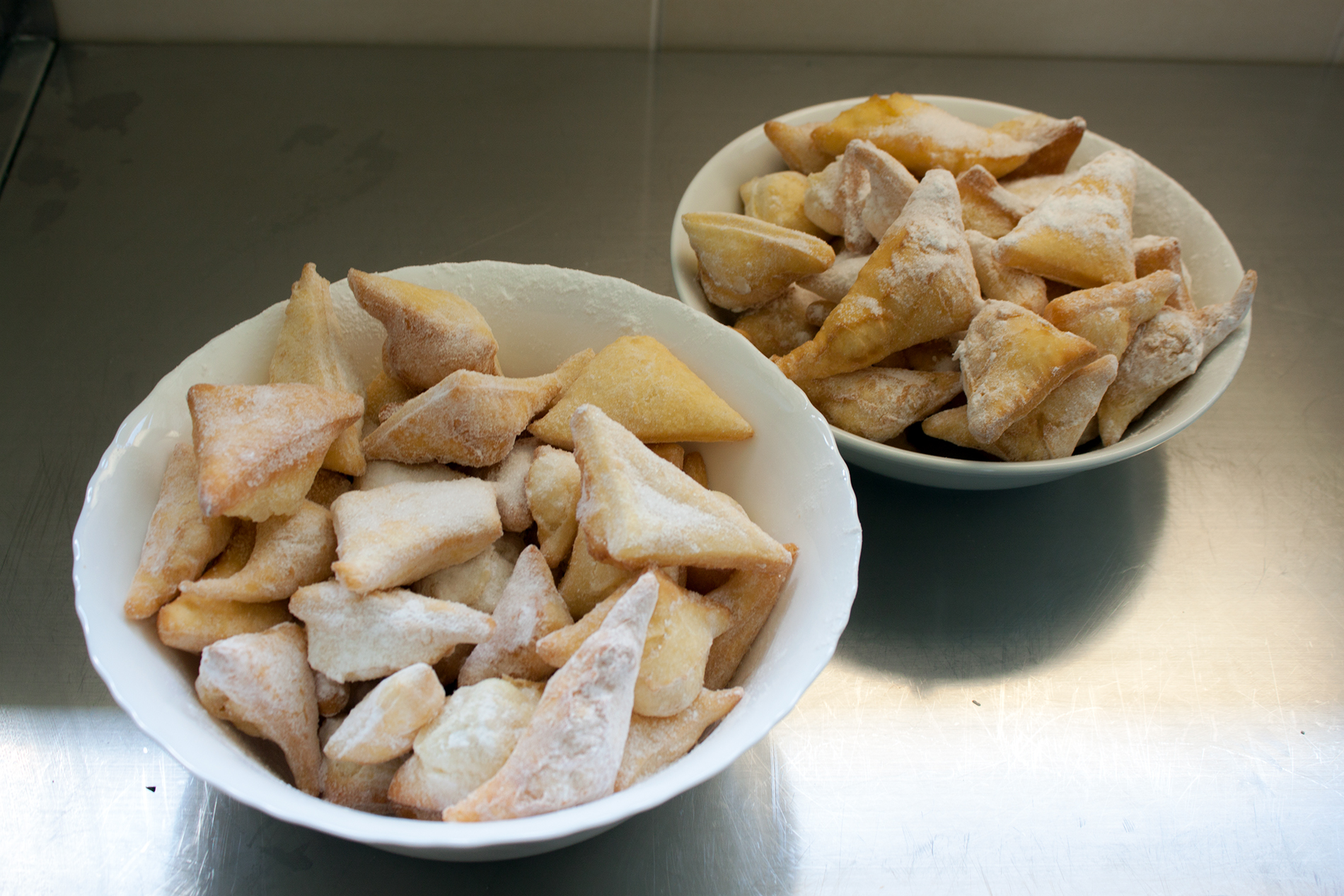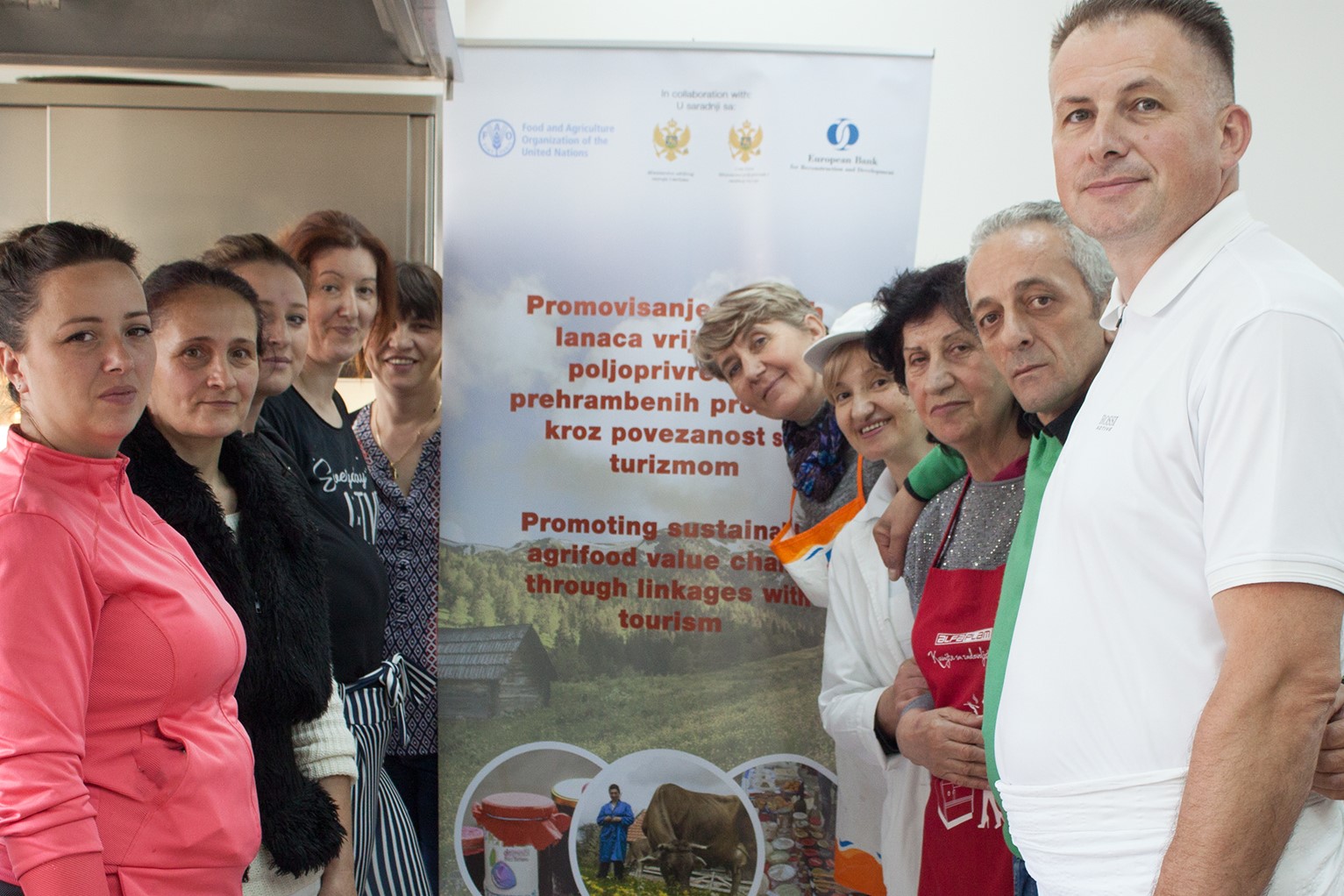Montenegrin traditional dishes showcased along new gastro route
_crop.jpg)
Northern Montenegro is a culinary treasure trove. There, one can feast on traditional dishes not found elsewhere in the country – like locally raised lamb stewed in milk, or kacamak, a typical porridgemade with local buckwheat.
But the region’s gastronomic delights are not well-known, something the country is hoping to change.
A gastro route is being developed as part of a pilot in the region with support from the European Bank for Reconstruction and Development (EBRD) and FAO.
The work is part of a broader initiative to link sustainable agrifood supply chains with rural tourism, in collaboration with Montenegro’s Ministry of Agriculture and Rural Development and the Ministry of Tourism and Sustainable Development.
The gastro route – thanks to the Regional Development Agency for Bjelasica, Komovi and Prokletije – should enhance local tourist offerings, stimulate the rural economy, and create jobs in the country’s less-visited northern hinterland, especially for women and young people.
As part of the initiative, cooks and chefs from several local hotels, restaurants and rural households chosen as points along the route recently took part in a series of trainings on preparing traditional dishes.
“The idea behind the capacity-building is to encourage hotels and restaurants to source high-quality food products locally while also helping local producers develop sustainable agrotourism activities,” said Jaap Sprey, head of the EBRD Resident Office in Montenegro.

Local ingredients, local know-how
Local ingredients, most of which are organic, and the native know-how passed down over the years are what make these dishes so special.
“Montenegro has a rich gastronomic culture – based on a tradition of simple, healthy foods – that is largely untapped,” said Wafaa El Khoury, an FAO Investment Centre service chief. “This initiative is helping small-scale producers link their traditional production to a marketable activity.”
Jelena Krivcevic, director of the Regional Development Agency, noted that in doing so, the initiative is helping to “preserve the region’s culinary heritage and breathe new life into the rural economy, while also offering tourists an authentic experience.”
As a first step, the local team collected traditional recipes from various cooks in the region, including from long-established restaurants and elders. The team then engaged Jelica Pesic, an award-winning Montenegrin chef with more than half a century of experience, to test and adapt the recipes for use in local hotels and restaurants.
Pesic led each of the three trainings, guiding participants on preparing several dishes and showing them how to preserve highly seasonal ingredients, such as nettle or wild mushrooms, for use throughout the year.
“I am really excited to see how participants respond to these dishes,” Pesic said. “Those who come from restaurants and hotels are particularly interested in vegetarian dishes. Most of the current dishes in hotels are meat-based, but more and more guests are looking for vegetarian options, so this training provided many new options for them.”
Immediately after the first training, one hotel decided to feature the traditional dessert ashure on its menu.

Culinary pride
Over the past several years, FAO and the EBRD have collaborated with the Ministry of Agriculture and Rural Development to help improve quality in Montenegro’s meat sector. This led to the registration of geographical indications for Stelja and Govedja cured meat products.
Other producers were encouraged to follow in their steps. Today, seven traditional products have been registered by the Ministry, including Kolasin Lisnati cheese, which is produced mainly by women and featured in the kacamak recipe taught to participants.
“The great thing about these trainings and the initiative as a whole is the passing of traditional knowledge and a sense of culinary pride from the older generation to the younger one,” said Anka Kujovic, senior adviser at the Ministry of Tourism and Sustainable Development. “It’s great to see so many young women involved. They really are the architects behind the region’s agrotourism.”
Milena Kotlica, adviser at the Ministry of Agriculture and Rural Development, added that “viable job opportunities, especially for young people, helps keep rural areas alive. This is why preserving and promoting the region’s gastronomy is so important. The Ministry continuously supports the efforts of small producers to improve their
production and introduce the necessary standards of quality and food safety.”
Traditional food can play a particularly important role in the development of rural tourism. It is also a sustainable development mechanism for small towns and villages, as it often comprises 30 percent or more of tourist expenditure, with this money regularly spent on local businesses.
The FAO–EBRD team will continue working with local hotels, restaurants and rural households in the pilot to produce promotional materials on traditional dishes – from fliers and brochures to narratives on menus.
To further promote Montenegrin gastronomy, an atlas of typical Montenegrin foods will be published later this year.
